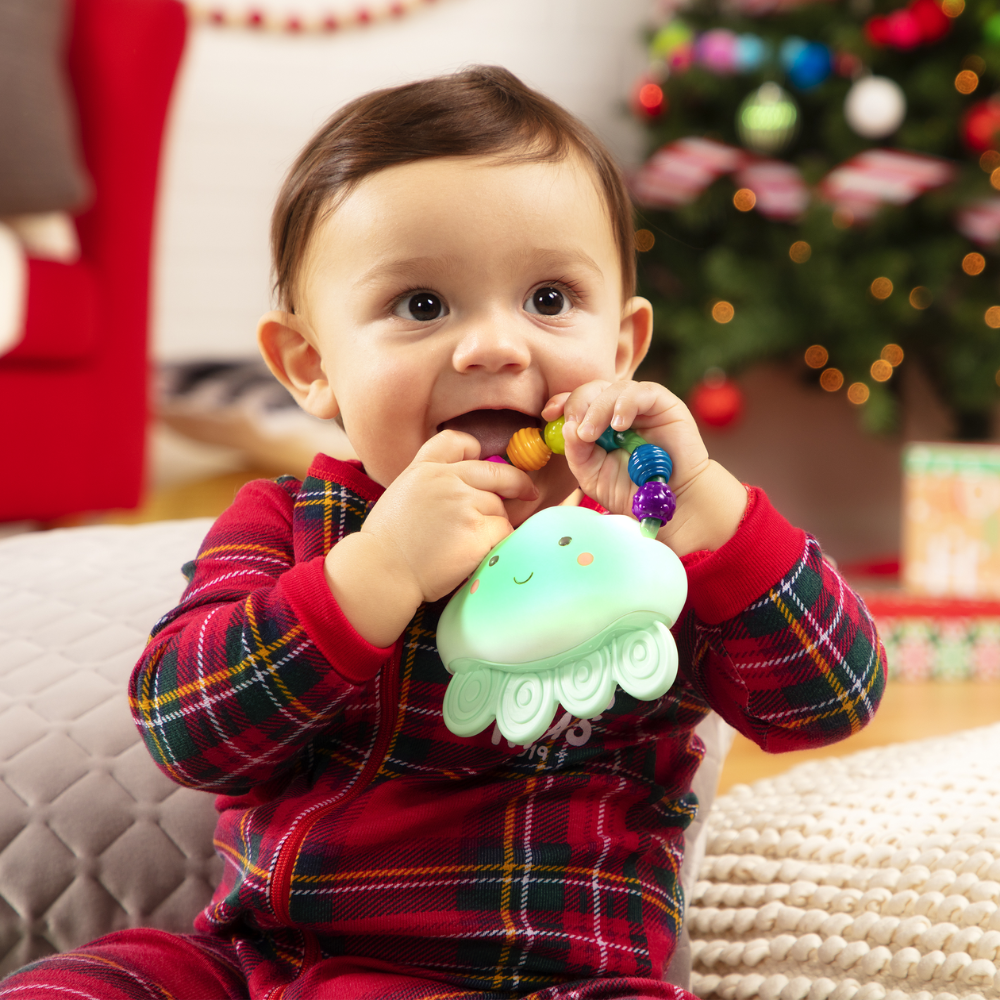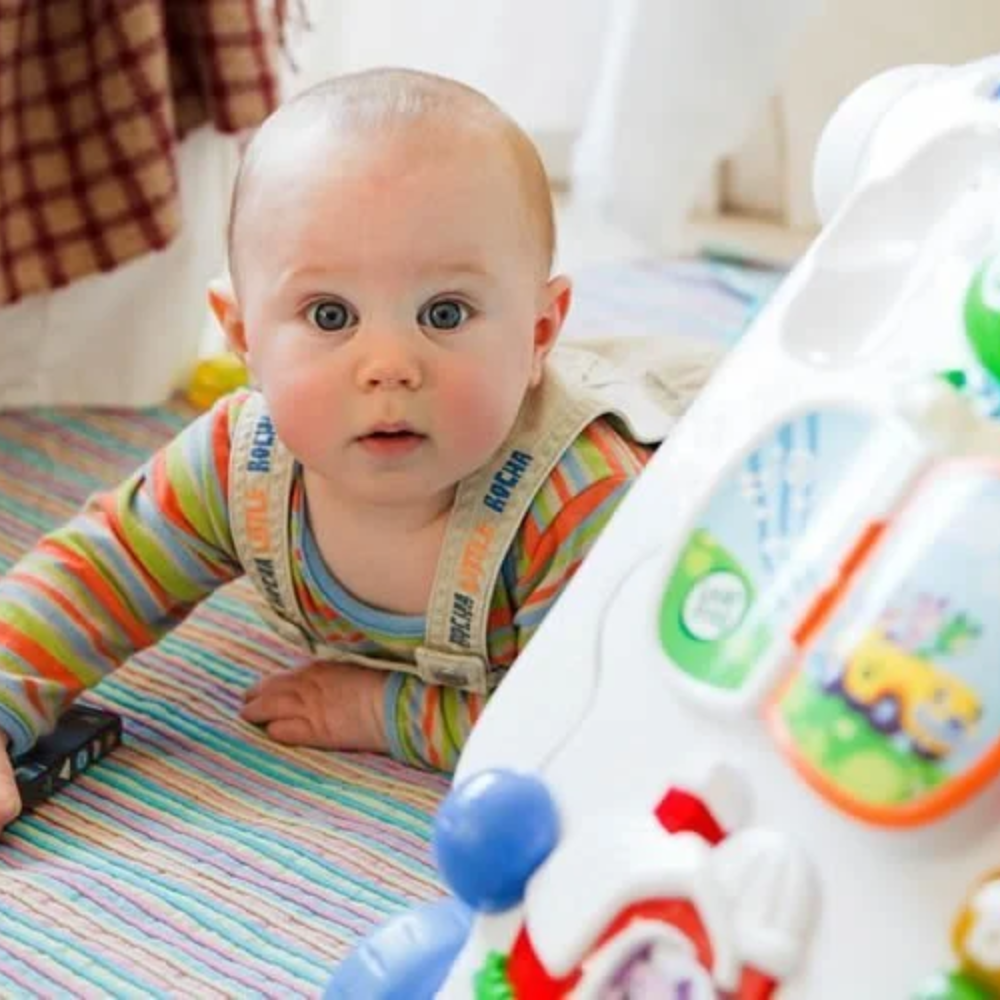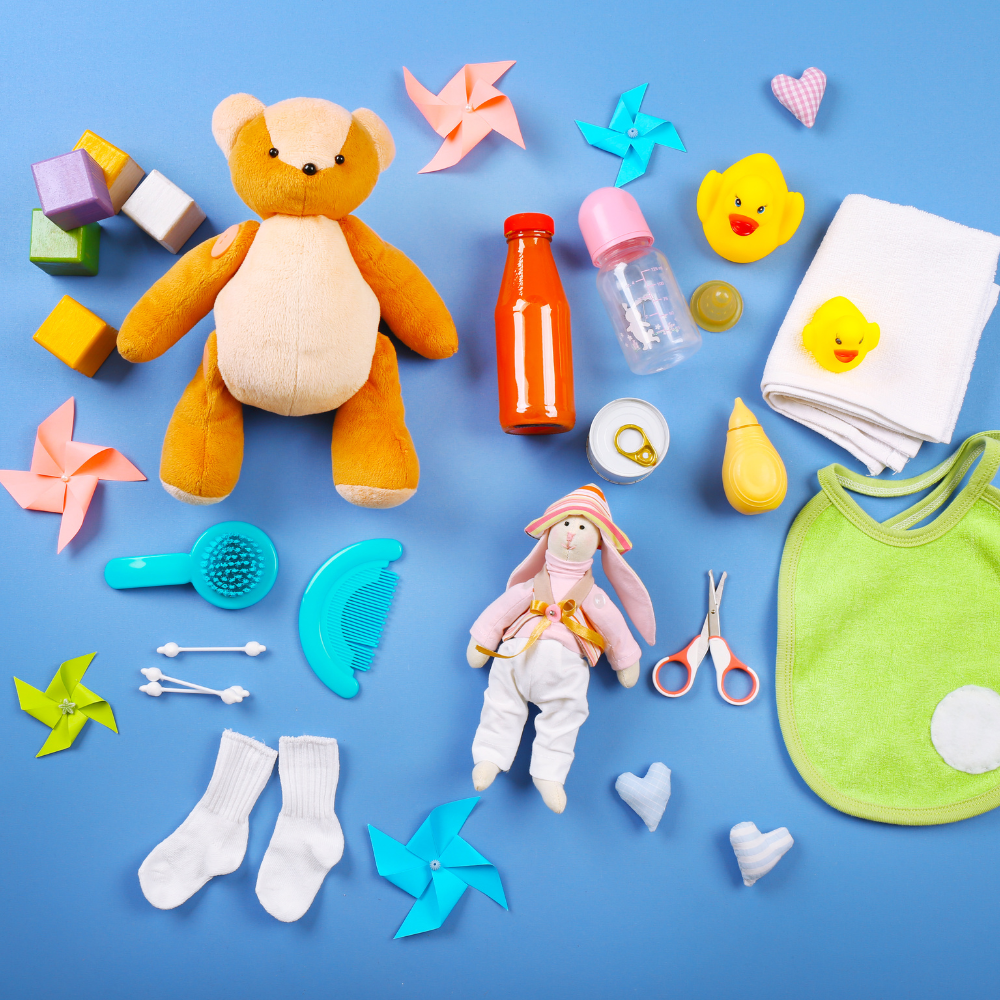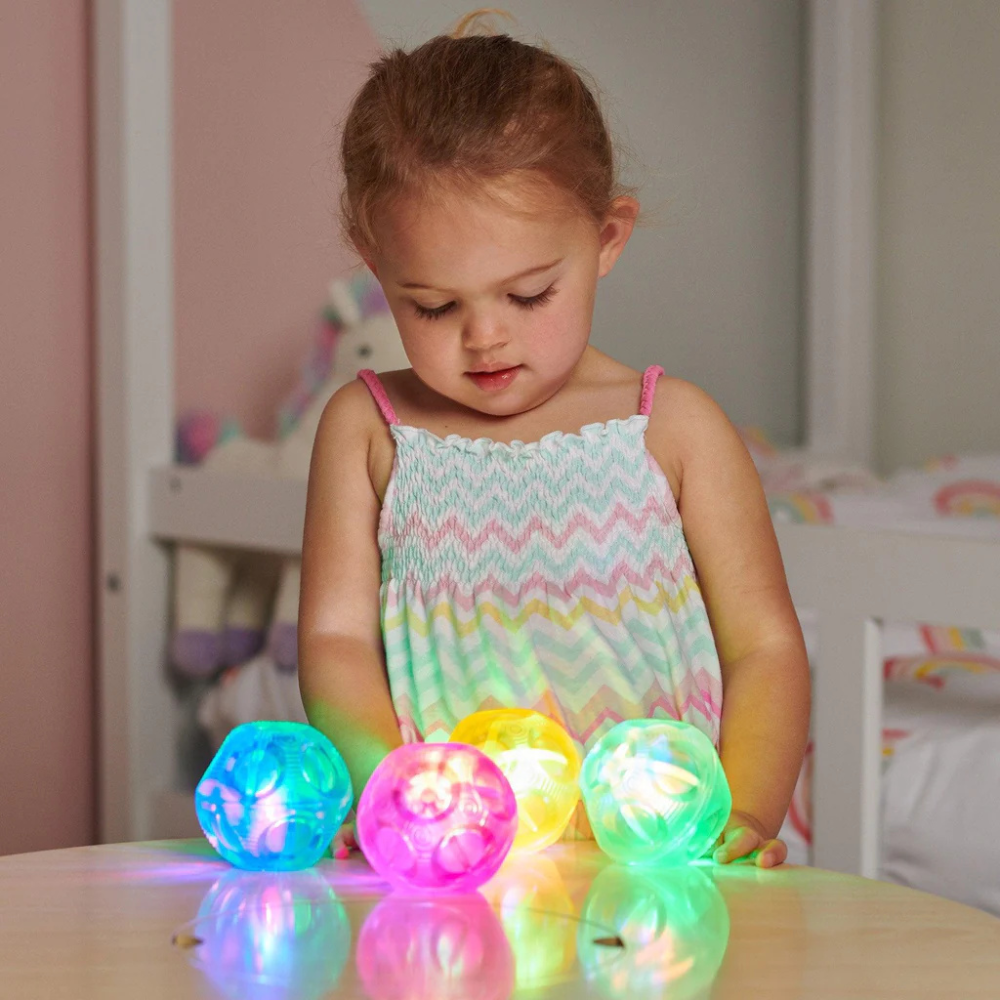Light up toys are becoming increasingly popular for babies and toddlers, with many parents seeing them as a fun and entertaining way to stimulate their child's senses. However, there has been some concern about the potential dangers of these toys, such as eye damage or overstimulation.
So are light up toys really a safe option for babies? In this article, we will explore are light up toys bad for babies, looking at everything from the potential risks to the benefits of these toys. We will also provide some tips on how to choose safe and age-appropriate light up toys for your little one.
What Is a Light Up Toy
A light up toy is any type of toy that lights up, flashes, or changes colors. These toys can range from simple handheld toys to more complex interactive ones.
Some popular examples include light-up balls, spinning tops, and musical instruments with flashing lights. Light up toys often have LED lights that produce bright and colorful displays when activated.
These toys are designed to capture a child's attention and engage their senses through the use of light, sound, and movement. They can also help improve hand-eye coordination and cognitive development in young children. However, it is important to note that not all light up toys are created equal and some may pose risks to babies if not used properly.
Potential Risks of Light Up Toys for Babies

While light up toys can provide educational and sensory benefits for babies, there are also potential risks associated with these toys. Here are some of the main concerns regarding light up toys for babies:
Eye Damage
One of the main concerns with light up toys is the potential for eye damage in babies. The bright lights and flashing patterns can be overwhelming for young eyes, leading to discomfort or even long-term damage. Babies' eyes are still developing, and exposure to bright lights for extended periods of time may cause strain and fatigue.
Parents should be cautious when choosing light up toys and opt for ones with softer lighting or adjustable settings that can be dimmed. It is also important to supervise children while they play with these toys and limit their use if you notice any signs of eye discomfort.
Overstimulation
Another risk associated with light up toys is overstimulation. These toys are often designed to provide a lot of sensory input, which can be overwhelming for babies and may lead to irritability or difficulty sleeping. Overstimulation can also affect a child's ability to focus and learn.
To avoid overstimulation, parents should limit the amount of time their child spends playing with light up toys and make sure they have plenty of breaks in between. It is also important to choose age-appropriate toys that are not too complex or flashy for your baby.
Choking Hazards
As with any toy, there is also a risk of choking associated with light up toys. Babies tend to put everything in their mouths, and small parts from these toys can easily break off and become a choking hazard.
Parents should always check the age recommendations on light up toys and avoid giving them to babies under the recommended age.
It is also important to regularly inspect these toys for any loose parts or damage that could pose a choking risk.
Benefits of Light Up Toys for Babies

While there are potential risks associated with light up toys, there are also many benefits that should not be overlooked. These include:
Stimulating Sensory Development
Light up toys can provide a lot of visual and auditory stimulation for babies, which is important for their sensory development. These toys can help babies learn to recognize colors, shapes, and patterns while also engaging their sense of hearing through music or sound effects.
Encouraging Play and Imagination
Light up toys come in a variety of forms and can spark a child's imagination and creativity. Whether it's pretending to play with a light-up sword or using a light-up ball for a game of catch, these toys can encourage open-ended play and help babies develop their imagination.
Improving Hand-Eye Coordination
Many light up toys require some form of physical interaction from the child, such as pressing buttons or moving objects around. These actions can improve hand-eye coordination in babies and help them develop fine motor skills.
Tips for Choosing Safe Light Up Toys
If you decide to introduce light up toys into your baby's playtime, here are some tips for choosing safe options:
- Check for age recommendations: Make sure the toy is appropriate for your baby's age to avoid potential risks.
- Inspect for loose parts: Regularly check the toy for any small or loose parts that could pose a choking hazard.
- Look for adjustable settings: Toys with adjustable settings can provide a more suitable level of stimulation for your baby.
- Choose toys with soft lighting: Opt for toys with softer or dimmable lights to decrease the risk of eye damage.
- Supervise playtime: Always supervise your child while they play with light up toys and limit their use if necessary.
- Read reviews: Before purchasing a light up toy, read reviews from other parents to get an idea of the potential risks and benefits.
These tips can help you choose safe and age-appropriate light up toys for your little one. Always prioritize your baby's safety and well-being when selecting any type of toy, and be sure to regularly inspect and monitor their playtime with light up toys.
Others Types Of Toys To Consider For Babies

While light up toys can provide a lot of benefits for babies, it is important to also vary the types of toys they play with. Here are some other types of toys that can engage and stimulate your baby's senses:
Sensory Play Toys
The first and foremost toys that babies should be introduced to are sensory play toys. These toys engage multiple senses and provide a variety of textures, sounds, and colors for babies to explore.
Examples of sensory play toys include soft fabric balls, textured blocks, and rattles with different shapes and materials. Also, consider using everyday household items such as cups, spoons, and containers for sensory play.
These toys can help babies develop their sense of touch, sight, and sound while also promoting fine motor skills and hand-eye coordination.
Soft and Plush Toys
Soft and plush toys are essential for babies as they provide comfort and security. These types of toys can also stimulate a baby's sense of touch through different textures, such as soft fur or smooth satin. It is important to ensure that these toys are safe and do not have any small parts that could pose a choking hazard.
Examples of soft and plush toys include stuffed animals, blankets, and loveys. Babies often form strong attachments to these types of toys, providing them with a sense of familiarity and comfort.
Simple Building Blocks
Building blocks may seem simple, but they offer numerous benefits for babies. Playing with blocks can help develop fine motor skills, hand-eye coordination, problem-solving skills, and spatial awareness.
Choose blocks that are easy for your baby to handle, with different colors and textures to engage their senses. As they grow older, you can introduce more complex building sets for them to explore.
Montessori Inspired Toys
Montessori-inspired toys focus on promoting independence and self-directed learning in children. These types of toys encourage babies to use their imagination and problem-solving skills while also developing fine motor skills.
Examples of Montessori inspired toys include stacking rings, shape sorters, and simple puzzles. These types of toys provide a fun yet educational experience for babies as they explore the world around them.
These are just a few examples of the many types of toys that can benefit your baby's growth and development. Remember to always prioritize safety and choose age-appropriate toys for your little one.
Are Light Up Toys Bad For Babies

Now we know all about the benefits of light up toys and how to choose safe options, but are they really bad for babies?
The short answer is no, light up toys are not inherently bad for babies. However, like any toy or object, there are potential risks if not used properly.
One concern with light up toys is the potential impact on a baby's eyesight. It is important to choose toys with softer or dimmable lighting and limit playtime to avoid overstimulation. Additionally, it is recommended to use these types of toys in well-lit areas and give your baby breaks from playing with them.
Another concern is that babies may become too dependent on the sensory stimulation provided by light up toys. It is important to also provide a variety of other toys and activities for your baby to engage in.
So while light up toys can provide numerous benefits for babies, it is important to use them in moderation and prioritize a balanced playtime experience for your little one. As always, consult with your child's pediatrician if you have any concerns about the use of light up toys.
FAQs
Are electronic toys, like light-up toys, harmful to very young children?
Electronic toys, including light-up toys, can be overstimulating for very young children. According to experts from Seattle Children's Hospital, it's important to balance their use with traditional toys to support healthy brain development and ensure appropriate stimulation.
How do electronic toys impact language skills and language development?
Electronic toys often focus on visual and auditory stimuli rather than interactive play, which can limit opportunities to teach children language. Traditional toys and interactive play are more effective in promoting language development, as they encourage conversation and engagement.
What role do traditional toys play in child development compared to electronic toys?
Traditional toys help foster creativity, problem-solving, and social skills in children, which are vital for child development. They provide a different type of engagement than many electronic toys, which may not encourage as much interactive play or teach social skills as effectively.
Why does this matter for a child's developmental stage?
At each child's developmental stage, different skills are being honed. Michigan Medical School highlights the importance of focusing on activities that promote overall child development, including language and social skills, which can be better supported by traditional toys rather than a baby cell phone or similar electronic toy.
Can electronic toys teach social skills effectively?
While electronic toys can be entertaining, they often do not provide the same opportunities to teach social skills as traditional play. Real-world interactions during children play are crucial for learning to communicate and collaborate with others.
How should parents balance the use of electronic toys with traditional playtime?
Parents should ensure that children play with a variety of toys, balancing electronic toys with traditional ones to support a range of developmental needs. Limiting the use of many electronic toys can promote healthier language skills and social interactions, crucial for a child's growth.
Conclusion
In conclusion, light up toys can be both beneficial and potentially risky for babies. They can provide sensory stimulation, encourage play and imagination, and improve hand-eye coordination. However, parents should also be cautious of potential risks such as eye damage, overstimulation, and choking hazards.
By following safety tips and closely supervising your child's playtime with these toys, you can ensure a safe and enjoyable experience for your little one. Remember to also vary the types of toys your child plays with to promote well-rounded development.
Always prioritize your baby's safety and well-being when choosing any type of toy, including light up toys. As always, consult with your child's pediatrician if you have any concerns about their playtime activities.
Subscribe to our email newsletter and unlock access to members-only content and exclusive updates.

Comments